Samsung’s V-NAND: Hitting the Reset Button on NAND Scaling
by Anand Lal Shimpi on August 21, 2013 2:50 AM EST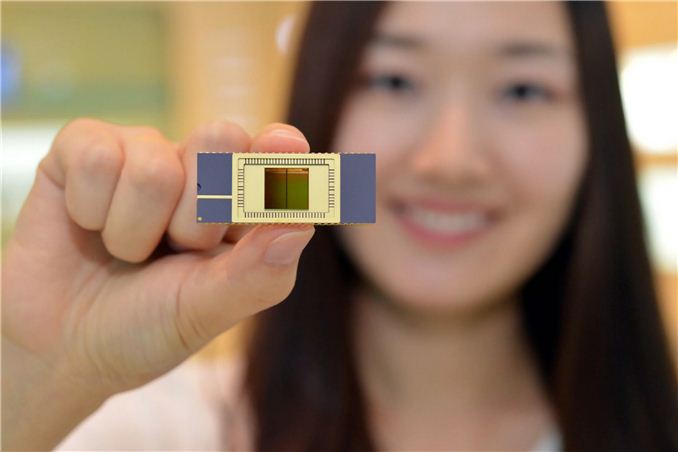
SSD pricing has come down tremendously since Intel’s X25-M hit the scene in 2008. Back then we were talking about 80GB for around $600, while today Micron and Samsung will sell you a 1TB SSD for the same price. Moore’s Law drove this scaling in capacity. Smaller transistors paved the way for higher density NAND in the same die area, and increasing volumes helped to keep the fabs full.
Although scaling transistor size helped address the cost-per-bit problem, it created a new one: decreasing endurance and performance. Just looking at what’s happened to IMFT NAND over the past few generations gives us an idea of what we’re dealing with:
| Micron NAND Evolution | ||||||||||||
| 50nm | 34nm | 25nm | 20nm | 20nm | 16nm | |||||||
| Single Die Max Capacity | 16Gbit | 32Gbit | 64Gbit | 64Gbit | 128Gbit | 128Gbit | ||||||
| Program Page (typical) | 900 µs | 1200 µs | 1300 µs | 1300 µs | 1600 µs | ? | ||||||
| Rated Program/Erase Cycles | 10000 | 5000 | 3000 | 3000 | 3000 | ~3000 | ||||||
Both endurance and performance trend downwards. Modern SSDs deal with the endurance problem by implementing sophisticated error checking/correction, and the performance problem is masked by exploiting parallelism as best as possible.
The root cause is basic physics. To store 2 bits per cell in present day MLC NAND, we’re talking about counting a couple dozen electrons. Go to 3 bits per cell (TLC NAND) and the difference between levels shrinks further. Scale down to 14/15/16nm NAND and everything gets more difficult. We’re heading towards a situation where the difference between levels in a NAND cell are a matter of a handful of electrons.
Measuring such subtle differences in stored charge is difficult, especially when NAND cells continue to shrink and are packed very tightly together. Interference between the cells becomes a much bigger concern below 20nm. Back at 50nm these sorts of issues were easy to mitigate with decent controllers and good quality NAND. Now we’re seeing more sophisticated ECC and DSP-like work being done by the controller in order to get accurate data in/out of the drive.
Scaling of traditional NAND via smaller manufacturing processes will come to an end. I’ve heard estimates saying we’ll see one or two more shrinks before it becomes unfeasible to scale cell size any further. The question then becomes: what’s next?
Last week Samsung gave their answer: V-NAND, a 3D NAND leveraging charge trap flash technology.
How it Works
Rather than increasing density by shrinking cell size, Samsung’s V-NAND takes a few steps back in process technology and instead stacks multiple layers of NAND cells on top of one another.
The change isn’t so simple. I’ve used the floating gate transistor diagram in many of our big SSD articles in the past, but that cell design doesn’t apply to V-NAND. In the floating gate MOSFET, electrons are stored on the gate itself - a conductor. Defects in the transistor (e.g. from repeated writes) can cause a short between the gate and channel, depleting any stored charge in the gate. If the gate is no longer able to reliably store a charge, then the cell is bad and can no longer be written to. Ultimately this is what happens when you wear out an SSD.
With V-NAND, Samsung abandons the floating gate MOSFET and instead turns to its own Charge Trap Flash (CTF) design. An individual cell looks quite similar, but charge is stored on an insulating layer instead of a conductor. This seemingly small change comes with a bunch of benefits, including higher endurance and a reduction in overall cell size. That’s just part of the story though.
V-NAND takes this CTF architecture, and reorganizes it into a non-planar design. The insulator surrounds the channel, and the control gate surrounds it. The 3D/non-planar design increases the physical area that can hold a charge, which in turn improves performance and endurance.
The final piece of the V-NAND puzzle is to stack multiple layers of these 3D CTF NAND cells. Since Samsung is building density vertically, there’s not as much pressure to shrink transistor sizes. With relaxed planar space constraints, Samsung turned to an older manufacturing process (30nm class, so somewhere between 30 and 39nm) as the basis of V-NAND.
By going with an older process, Samsung inherently benefits from higher endurance and interference between cells is less of an issue. Combine those benefits with the inherent endurance advantages of CTF and you end up with a very reliable solution. Whereas present day 19/20nm 2-bit-per-cell MLC NAND is good for around 3000 program/erase cycles, Samsung’s 30nm-class V-NAND could withstand over 10x that (35K p/e cycles).
The move to an older process node doesn’t even come at a reduction in density thanks to just how high Samsung can stack its V-NAND. In its announcement last week, Samsung introduced a first generation 128Gbit MLC V-NAND solution with 24 layers. The 128Gbit device delivers 2x the density in the same physical space as a 19/20nm 64Gbit device, or roughly equivalent density to a traditional 128Gbit planar device at 15nm - the obvious benefit being better endurance, and performance.
Since we’re dealing with physically larger NAND cells that are also less susceptible to certain types of interference, program times are lower - meaning that performance is higher. With fewer retries required for all reads/writes, overall power consumption can be lower as well. At the end of the day, it’s just a better solution.
Samsung went one step further and announced that it was sampling an enterprise SSD built around V-NAND to key customers. Since V-NAND is presently only available in a 128Gbit density, capacities aren't anything earth shattering but I suspect that'll change soon enough. It’s too early to talk about pricing and availability unfortunately.
V-NAND is the future for Samsung. We’ll see V-NAND in appear in enterprise, client and even mobile (phones/tablets). There will likely be a period of overlap as Samsung transitions to V-NAND, but expect to see that transition begin next year across multiple markets.
A 128Gbit device is nice, but that’s not the end of the road. Samsung is predicting it’ll be able to build a 1Tb device by 2017, showcasing just how much scaling it can get out of 3D NAND. Samsung could theoretically also move to a smaller process node to further increase density, although ultimately that will run into the same limitations we’re facing today with traditional, planar NAND. The initial design only stores two bits per cell, but if need be Samsung could also move to a TLC V-NAND.
What about the rest of the present day NAND players? I suspect those that don’t move to CTF and/or 3D NAND will instead have their sights set on a bigger departure from NAND: some form of resistive RAM. The potential performance gains there are even higher, and you can also deploy a vertically stacked solution to gain density.
The good news is that it looks like we’re going to have some great options that will enable continued improvements in SSD density, cost and performance.


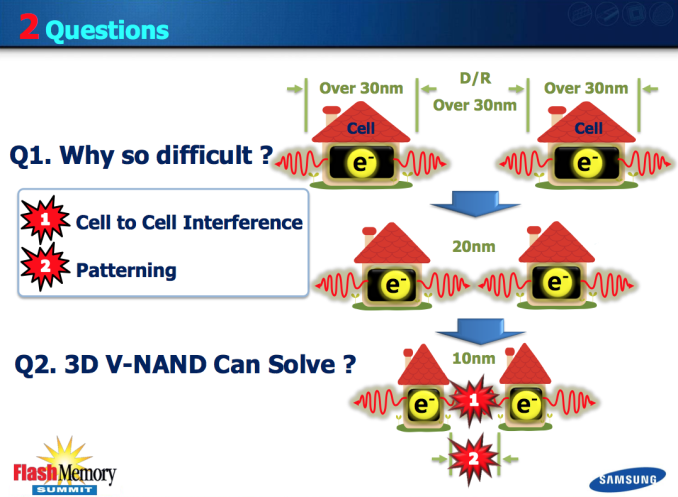
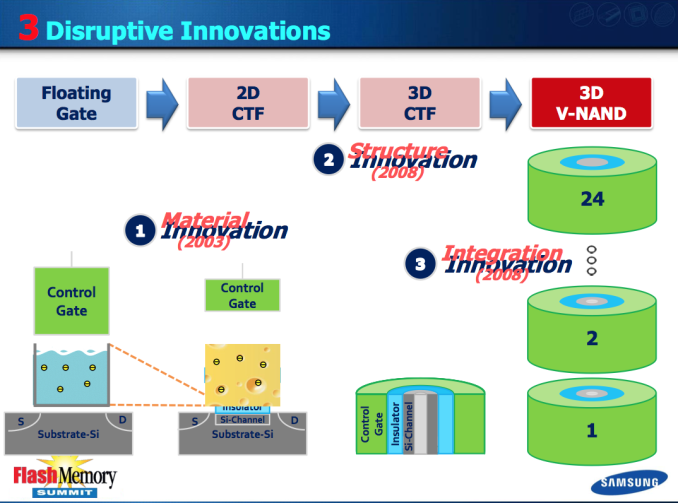
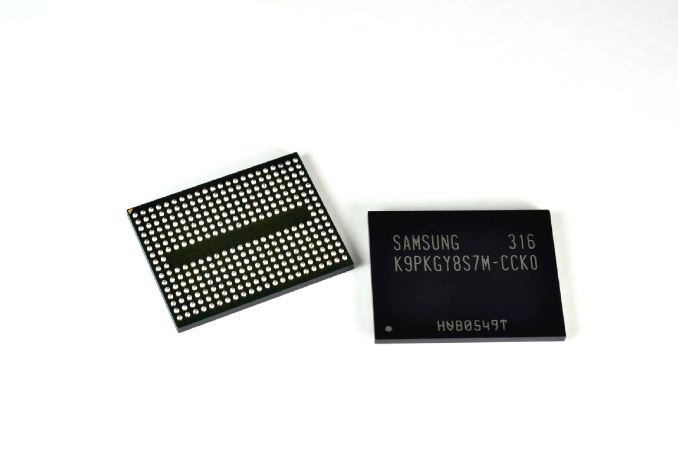
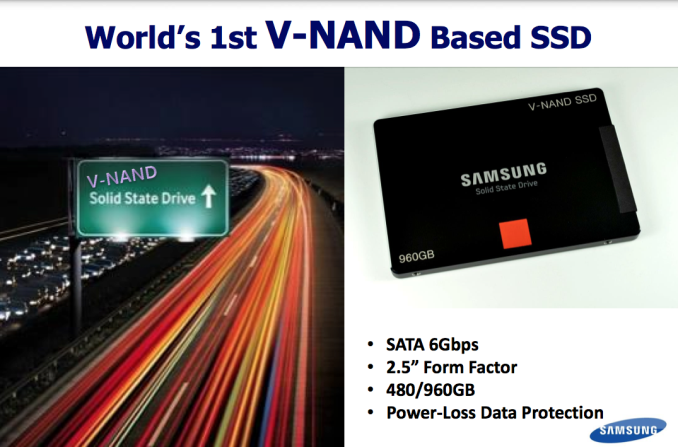
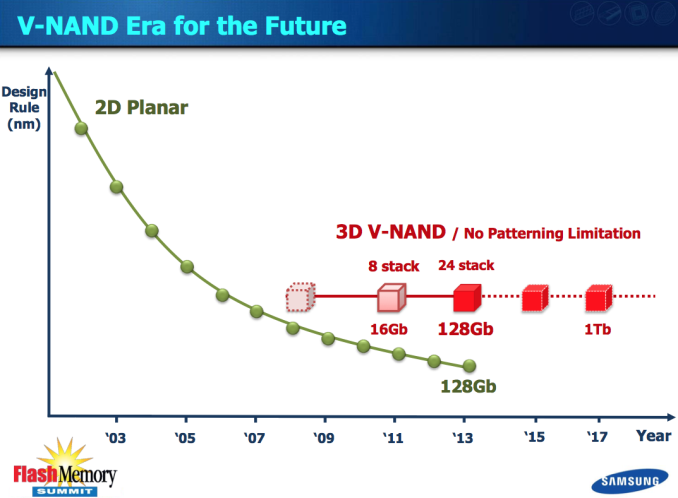








44 Comments
View All Comments
DigitalFreak - Wednesday, August 21, 2013 - link
So does this mean we'll soon have 2.5", full-height SSDs? :0)Asmodian - Wednesday, August 21, 2013 - link
Each layer is very thin, this stacking does not affect the overall thickness of the chip, let alone the drive.All the layers are FABed on one wafer, they are not stacking silicone chips. A drop in yield of 95.83% would be... unacceptable.
p1esk - Wednesday, August 21, 2013 - link
How do you know they're not stacking multiple wafers?DigitalFreak - Wednesday, August 21, 2013 - link
'twas a joke...LeftSide - Thursday, August 22, 2013 - link
I wonder if the s5 will have one of these chips. 128gb in a phone sounds nice.meloz - Thursday, August 22, 2013 - link
This is the first SSD news that has me excited in months. True game changer! I was beginning to get bored with meagre incremental improvements in density/cost, but now it looks like we will get a big boost, just have to wait another 24 months or so.Other players will also have to find a way to offer higher density/cost to stay relevant, so we consumers can only win. The future of solid state storage looks bright. I see a future when you can get a high performance 128GB SSD for less than $30.
As an aside, I found some of the illustrations used in the articles rather cute. Love how they gave each electron a 'home'. Samsung must have hired some comic book illustrator.
Impulses - Friday, August 23, 2013 - link
I imagine 128GB drives will eventually become irrelevant or just budget parts with last gen controllers/flash... Just like you don't see a HDD as small as 160GB on anything but a netbook anymore. Not hating, just saying, 128GB is rather small. I'm running two 128GB Samsung 830s btw.geok1ng - Thursday, August 22, 2013 - link
if half of samsung's claims are true they have a product perfect for corporate market and very suitable for consumers devices. i do not like the prospects for people with money invested on microns stocks.Impulses - Friday, August 23, 2013 - link
You're assuming Intel/Micron are just sitting on their hands?arnavvdesai - Thursday, August 22, 2013 - link
This is exciting news from the NAND performance but like Anand mentioned I would love to get a very good long forma article regarding memresistors and how much of an impact will they have on computing in general. If your RAM is your HDD wouldn't we get an exponentially large leap in performance akin to something we got while moving from HDD to SSD?